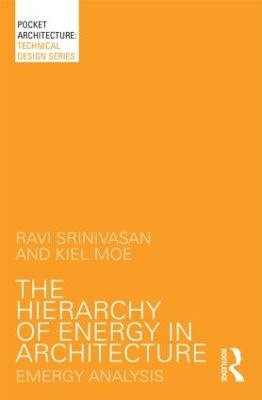
The Hierarchy of Energy in Architecture
Routledge (Verlag)
978-1-138-80353-4 (ISBN)
The laws of thermodynamics—and their implications for architecture—have not been fully integrated into architectural design. Architecture and building science too often remain constrained by linear concepts and methodologies regarding energy that occlude significant quantities and qualities of energy.
The Hierarchy of Energy in Architecture addresses this situation by providing a clear overview of what energy is and what architects can do with it. Building on the emergy method pioneered by systems ecologist Howard T. Odum, the authors situate the energy practices of architecture within the hierarchies of energy and the thermodynamics of the large, non-equilibrium, non-linear energy systems that drive buildings, cities, the planet and universe.
Part of the PocketArchitecture series, the book is divided into a fundamentals section, which introduces key topics and the emergy methodology, and an applications section, which features case studies applying emergy to various architectural systems. The book provides a concise but rigorous exposure to the system boundaries of the energy systems related to buildings and as such will appeal to professional architects and architecture students.
Ravi Srinivasan is Assistant Professor of Low / Net Zero Energy Buildings at the College of Design, Construction and Planning at the University of Florida, USA. He develops and teaches new courses related to low and net zero energy buildings in both the undergraduate and graduate programs, enhancing the school’s internationally recognized sustainable construction management program, researching and establishing net zero and low energy building frameworks, and organizing student competitions. He has more than 50 technical publications in peer-reviewed journals, refereed conference papers, and research reports. Kiel Moe is Associate Professor of Architecture and Energy at the Graduate School of Design at Harvard University, USA, where he is Co-Director of the MDes program, Co-Coordinator of the Energy & Environments MDes concentration, and Co-Director of the Energy, Environments, and Design Research Unit. He is author of Insulating Modernism: Isolated and non-isolated thermodynamics in architecture (2014), Convergence: An architectural agenda for energy (2013), Thermally Active Surfaces in Architecture (2010), and Integrated Design in Contemporary Architecture (2008). He was co-editor, with Ryan Smith, of Building Systems: Design technology & society (2012).
List of Figures and Tables Series Editor’s Preface Preface Acknowledgments Part 1: Fundamentals 1. Energy, Entropy, Exergy, & Emergy 2. Emergy Analysis Methodology 3. Comparing Emergy Analysis with Life Cycle Assessment Tools Part 2: Applications 4. Emergy Evaluation of Mobile Kiosk 5. Emergy Evaluation of Rinker Hall Appendices 6. Glossary of Terms 7. Annotated References 8. Comprehensive List of Solar Transformities
| Erscheint lt. Verlag | 12.6.2015 |
|---|---|
| Reihe/Serie | PocketArchitecture |
| Zusatzinfo | 36 Illustrations, color |
| Verlagsort | London |
| Sprache | englisch |
| Maße | 129 x 198 mm |
| Gewicht | 320 g |
| Themenwelt | Naturwissenschaften ► Biologie ► Ökologie / Naturschutz |
| Technik ► Architektur | |
| Technik ► Bauwesen | |
| Technik ► Elektrotechnik / Energietechnik | |
| ISBN-10 | 1-138-80353-7 / 1138803537 |
| ISBN-13 | 978-1-138-80353-4 / 9781138803534 |
| Zustand | Neuware |
| Haben Sie eine Frage zum Produkt? |
aus dem Bereich


